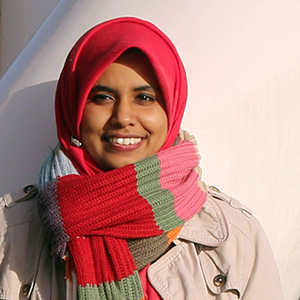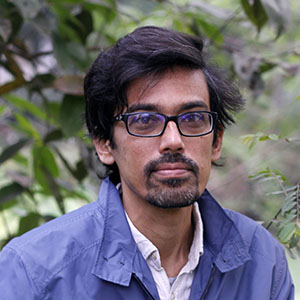Good Design with People is Power
A collective reimagining of the city
Khondaker Hasibul Kabir and Suhailey Farzana are the cofounders of Co.Creation.Architects (CCA) and Platform of Action and Architecture (POCAA). They received the UIA 2030 Award and the Aga Khan Award for Architecture in 2022 for their works to regenerate the urban spaces along the Nobogonga River in Jhenaidah, Bangladesh.
The beginning: The decision to set up practice in Jhenaidah
Khondaker Hasibul Kabir: We were practicing in Dhaka, where I was also teaching architecture at BRAC University and we were involved in action research projects with low-income communities in rural and urban areas. We really believe that knowledge is everywhere, nature is cocreating just like people are cocreating, and if we understand and listen to people we can engage with them as architects and participate in their cocreation process. But when we wanted to take these ideas to mainstream architectural and policy making processes it was very difficult. During that time we became involved in a bigger network working in Bangladesh as well as 19 other Asian countries called the Community Architects Network (CAN) and through this network it was possible to scale-up our work.
After working for about a year and a half on a pilot project in a secondary city we felt that the community people were ready, but the policy makers were not. They kept saying that this works in Thailand or Indonesia or in Latin America, but not in Bangladesh. So we understood that we needed to create an example in Bangladesh and we felt we could do this by returning to our hometown. This was the beginning really, we came here and stayed here and worked on connecting with the people.
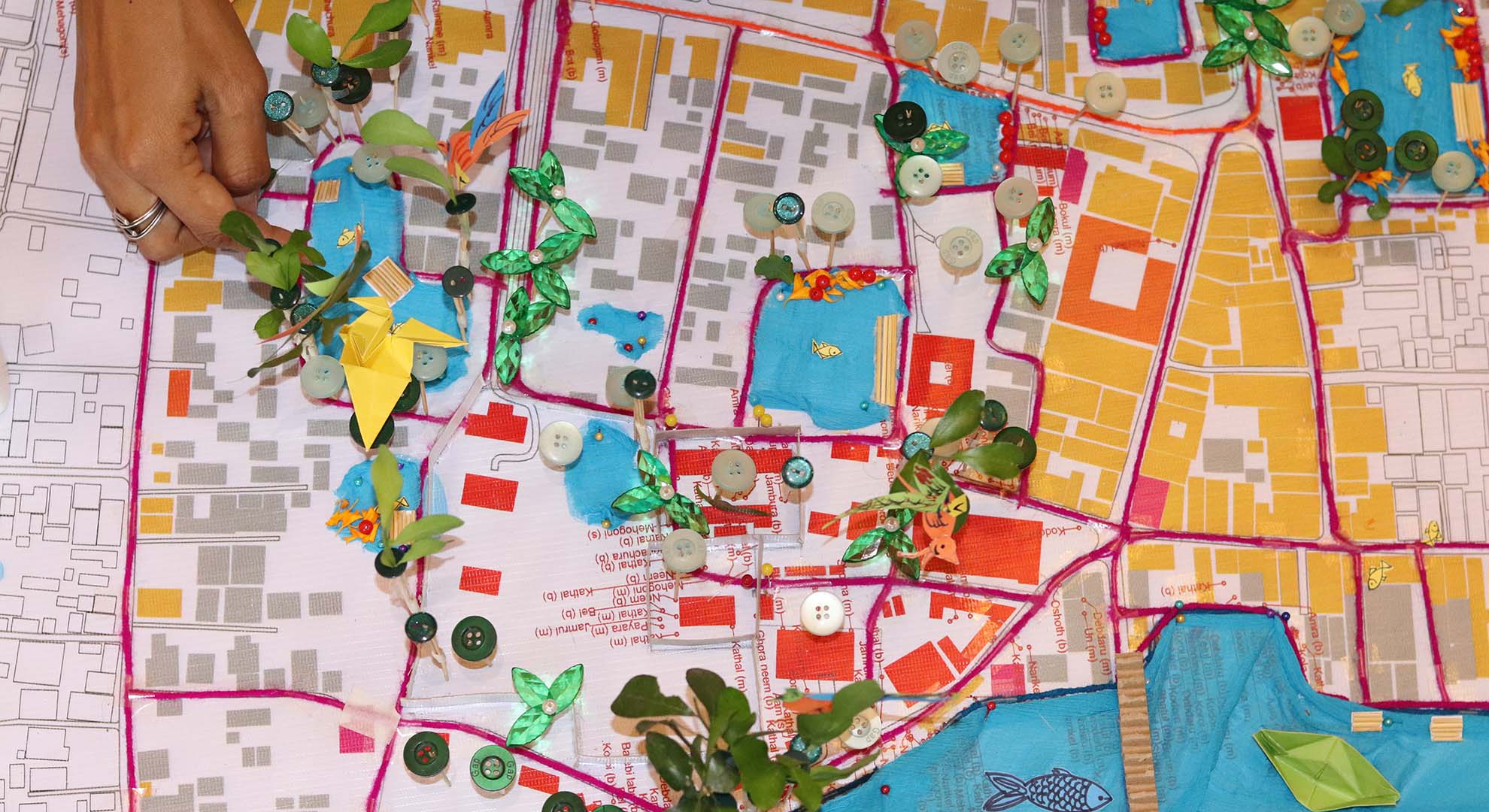
Mapping urban spaces. Photo © Co.Creation.Architects
Getting started: The first community-led project for housing
KHK: We made ourselves visible and began to organize nine low-income communities. We recommended that they put their savings together so we could design their houses with little money. When that happened people began to believe in the process, first the community, then the municipality and government, and in addition, the NGO BRAC extended this process to 20 other cities, where the women’s groups from the first project became the teachers.
Suhailey Farzana: We realized it’s very complex when we design alone because we can’t really understand all the issues. So we made our team bigger and we invited everyone to design. It was quite interesting how people perceived our identity in the beginning, which was not as architects but rather, as citizens who were living there and trying to solve the problem all together. At the start we talked in a very informal way and then as architects, we facilitated and organized the process.
The process: The development of the Urban River Spaces project
SF: We’re driven by the people’s interest. We never try to lead the process as if it’s our project. It’s more like we organize the workshops and visualizations and other activities with the community and then we see who’s interested, because without interest you can’t really go very far.
KHK: Yes, it’s very important to explain that we don’t take the responsibility for the project on our shoulders in the beginning. But architects are very good at organizing and visualizing people’s dreams. In our project for the Urban River Spaces we were designing the whole 5 km stretch of the riverside with a very low-income community and they needed a “ghat,” which is a series of steps by the river, where they can take baths and so on. So this is one part of the project. And another one is by the river in the city center where the people wanted a big space for walking and cultural activities.
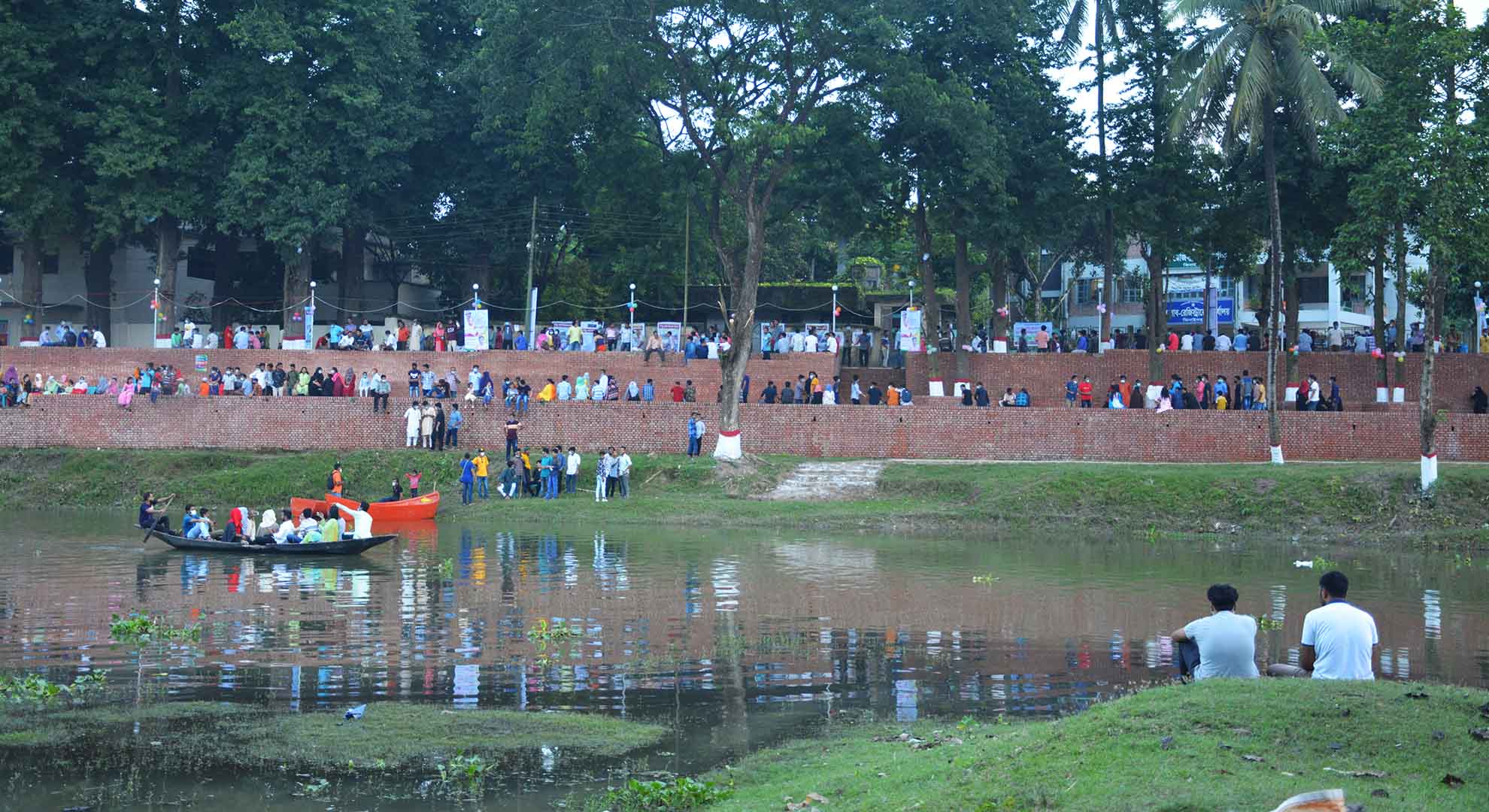
Urban river space by the water. Photo © Co.Creation.Architects
SF: The citizens wanted this urban space to be the main focus because it was traditionally quite important; a fair was held here and there are 100-years-old trees. But it was not a very safe place since it was a dead-end with a wall. Just behind the wall there was another community that couldn’t be accessed and through this process we broke through the wall to connect the two communities. From this point the city started to grow. And also the bungalow of the District Commissioner (DC) is nearby. By breaking through the wall and making a gate the DC can have an eye on the space to make it safer. At first, a lot of women were skeptical about it but now when you go many women and girls are there.
Civic consensus and initiatives: Working with professional volunteers
KHK: Since we have an architectural practice and also teach in the university we have another source of income and so in our spare time, as citizens we can give back to the city like others in our team, which we call the “City-wide People’s Network.” It’s quite large, there are more than 20 civic groups and we come together to talk about how can we make our city better. We’re all volunteers, we volunteer as architects, and there are teachers, students, business people, street vendors, doctors, farmers, crafts people, children, elderly, municipality, sports and cultural groups, low-income community women groups, etc. Since 2015 we’ve been doing a lot of things.
SF: I think the most important part is the relationship among us. When you get the best of collectiveness and see the results and impact, then everyone is like, “OK, we can do it again.” We meet each other often since we’re all professionals living in the same city, which is very important because we’re not consultants who are hired by the municipality to come here. So many things move forward because of the relationship of trust, care and love I would say.
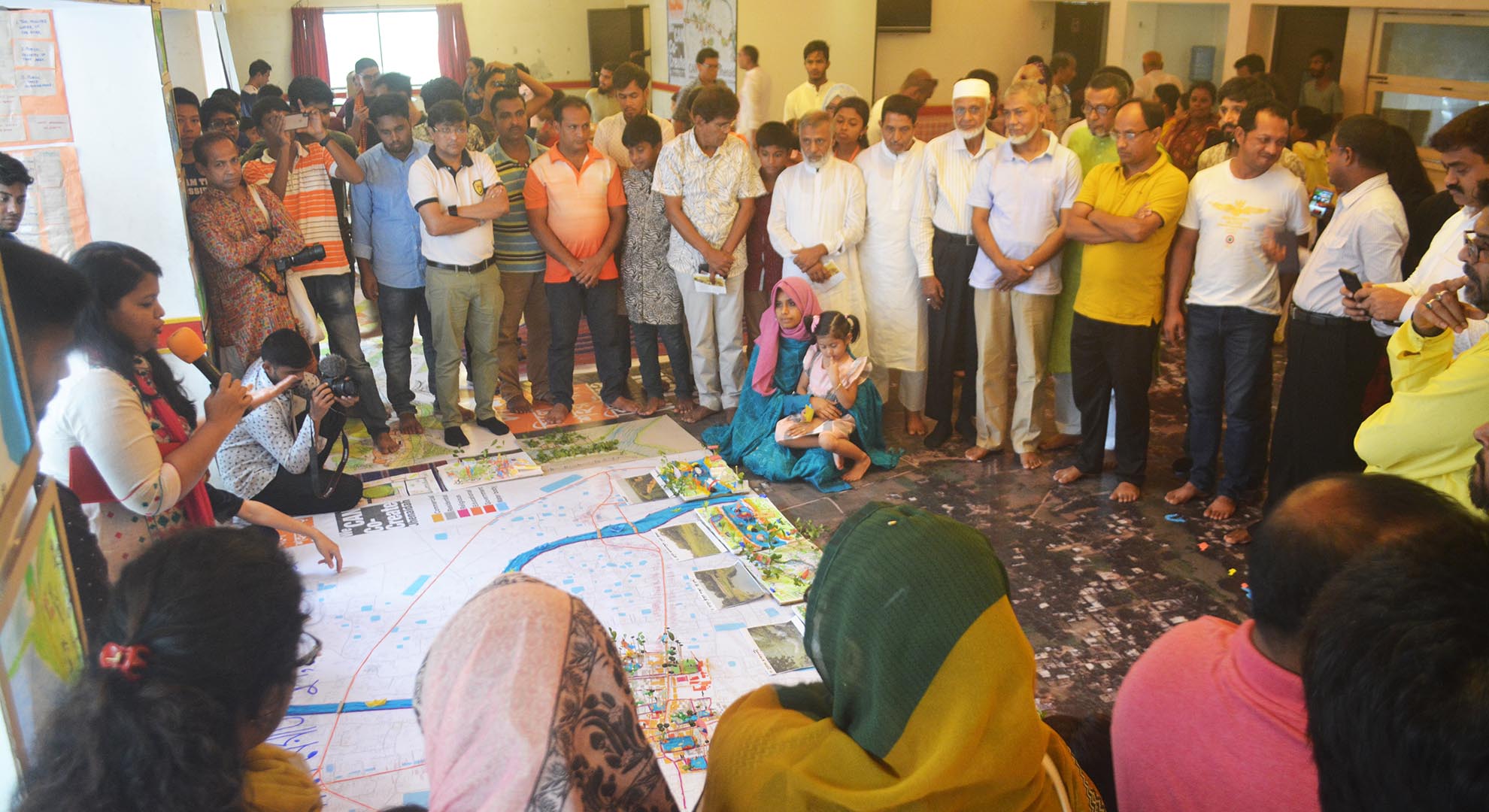
Dialogue in a cocreation workshop. Photo © Co.Creation.Architects
The workshops: How they are organized and financed
KHK: Whether architects and planners are present or not, the city itself is growing, people are making the city. So what we are saying is, “Why can’t we plan the whole city by the citizens from the beginning?” Then we can invite the planners and architects when we need them. That’s what we did when we organized the first workshops: We invited architects and planners from other cities, and also from six other countries. We invited our friends and colleagues and they enthusiastically came and contributed. For the seven day workshop the city hosted them and for very little money, just for hosting them, they got a lot of knowledge. This process is continuing in our city and other cities in our country have also copied it.
SF: The other important thing is that we don’t just meet with the citizens, get some ideas and then go to the authorities. Rather we also invite the authorities and we let them know what that we are working on. So it’s a kind of platform, where there are contradictions and challenges, but everyone listens to one another. Most importantly, we keep the most vulnerable in the forefront, like the children and the women, and those from the low-income settlements who don’t usually have much of a voice.
Political priorities: The future of the Urban River Spaces project
KHK: The municipality’s main priority now is to restore the whole riverside, which holds a special place in people’s memories because the river used to be the center of the city, it had very clean water and they used to swim and fish there, and it was the place for a lot of activities. As the city developed, the drainage system became bigger and better but the river became more and more polluted because the water was going there without any treatment. So we are very much focused on the water, saying, “Let’s face the river again, and increase the happiness of the city.” Everyone said this was impossible, not only in Jhenaidah but all over the country. But we insisted that step-by-step it is possible. We showed them where it would be easiest to start and the mayor said that since it’s public land the investment could be made there.
We have to be engaged with politicians and policy makers. Now we’ve developed a good relationship with the mayor, the District Commissioner and the police and the people see that we have power. So what is it? Our power is in good design. This is why we say that good designers should become more and more involved in peoples’ processes, which makes architecture more powerful and widens its horizons.
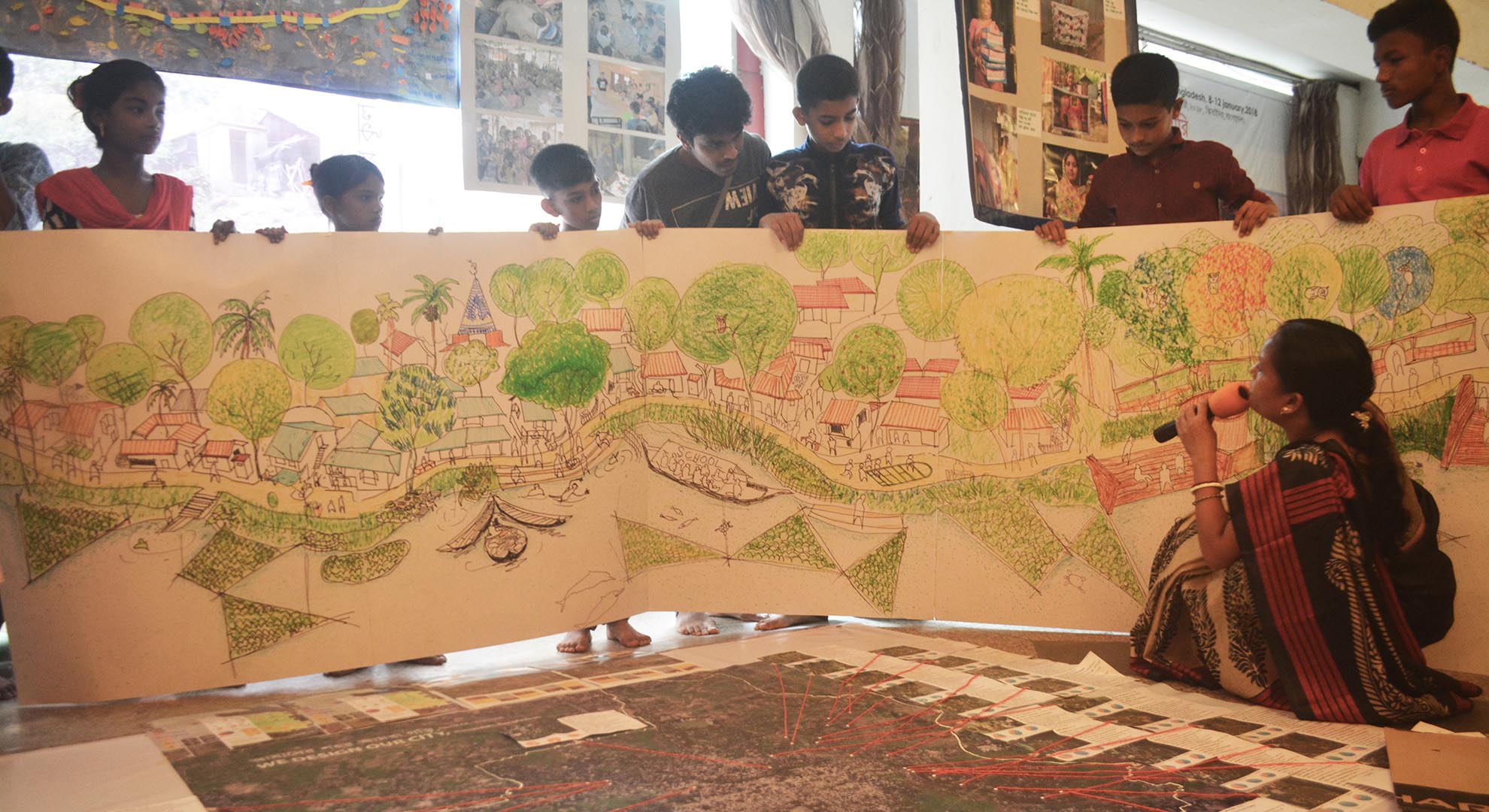
Community women sharing their aspirations. Photo © Co.Creation.Architects
Community-led projects: Teaching and learning
SF: We can teach everyone what we’ve learned in the first two years at the architecture schools because it’s very basic, and people are smart, and they can actually do it. As we were working in the city we were teaching many young volunteers how to measure and how to draw, and they built beautiful scale models. Recently we were working with school children on a project to develop their school premises and how to link it with the road. On the first day they drew by hand and understood the scale and the very next day they came up with a really good drawing on an iPad of a design for the solution. Really, you don’t need to work so much, you just organize what they are aspiring to.
Future projects: What’s coming up for Co.Creation.Architects
KHK: After the recognition from the UIA and Aga Khan Award, people have become very enthusiastic. A few months ago, a new mayor was elected and his mandate was based on what we have been doing, which was making the city face the river again. Now our agenda is not to do it in a piecemeal way and we’ve convinced him that we need to have a proper strategic masterplan for the city. And that masterplan can also be done in a people-led process from the beginning, so that we know what to do and where to do it in the next 50 years. That’s what we are pushing for and we are also connecting with the government to make it happen soon.
A collective reimagining of the city: Sharing the knowledge and know-how
KHK: Is there any better alternative to community-led projects? Is there any better sustainability than community-led projects? Because if the people lead, immediately the projects are sustainable. But still the system is not ready and the people in the system are not confident enough to do this. This people-led process is a different kind of skill, but it’s also a learnable skill. I think the world is recognizing this now and feel that this is the future. So now we are in Cox’s Bazaar, a big city by the Bay of Bengal where we are invited in a government project to make a people-led city plan. We are also invited to work in Dhaka South City Corporation to revive two degraded canals by engaging with local communities because the city authorities now recognize that this is a better process. However, still they expect that professionals like us should go from different cities like “experts” and work “for” the city. We say, “It's your city, you should be able to solve it by yourselves by working ‘with' people. If we come and work in your city it will not be sustainable in many ways. But, to build your confidence, in the beginning we can be with you and show you how to start a people-led city cocreation process.”
This interview was conducted by Diane Gray and Mehrab Iftekher. It has been edited and condensed.
Main image: Urban river space in a riverside community. Photo © Co.Creation.Architects
